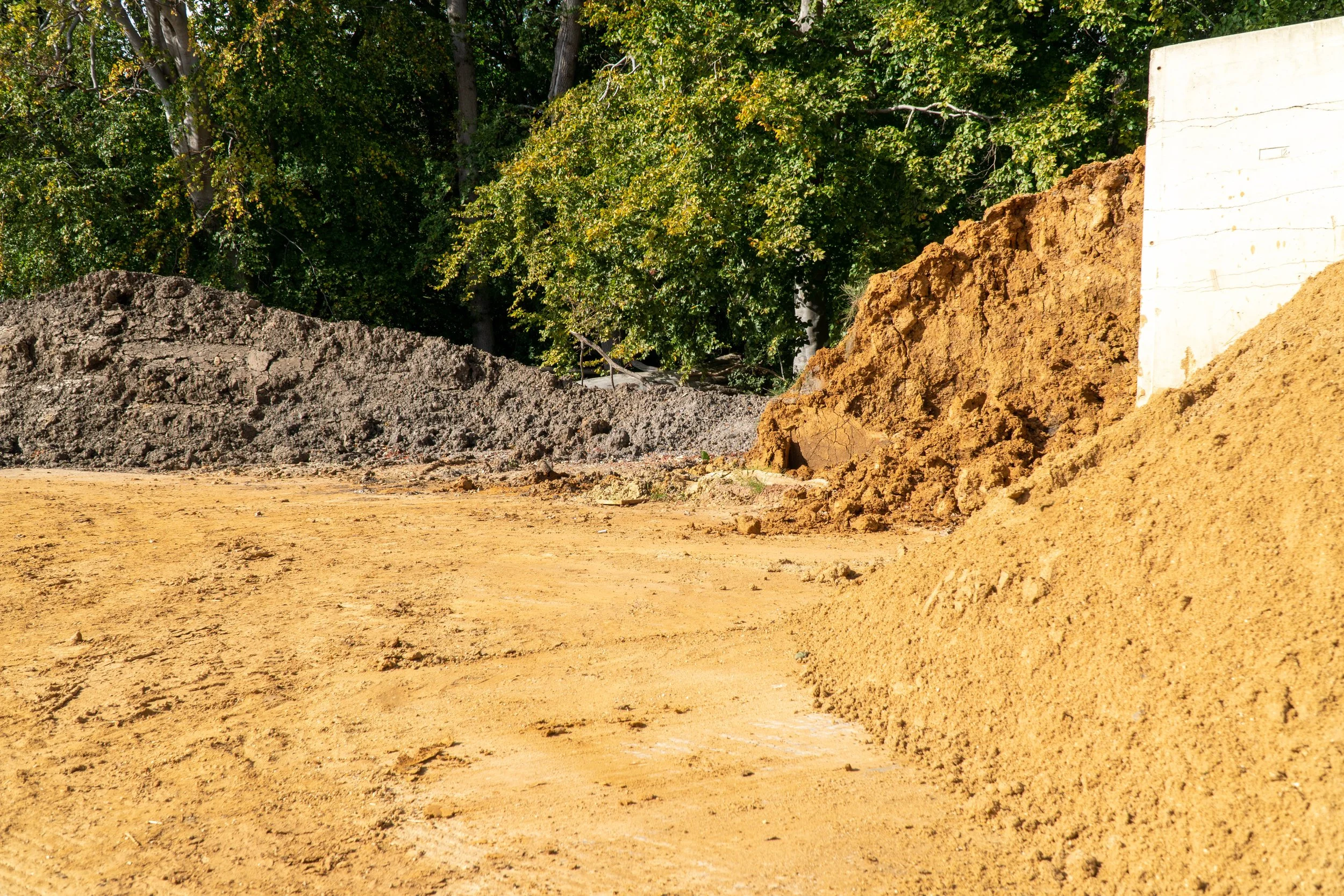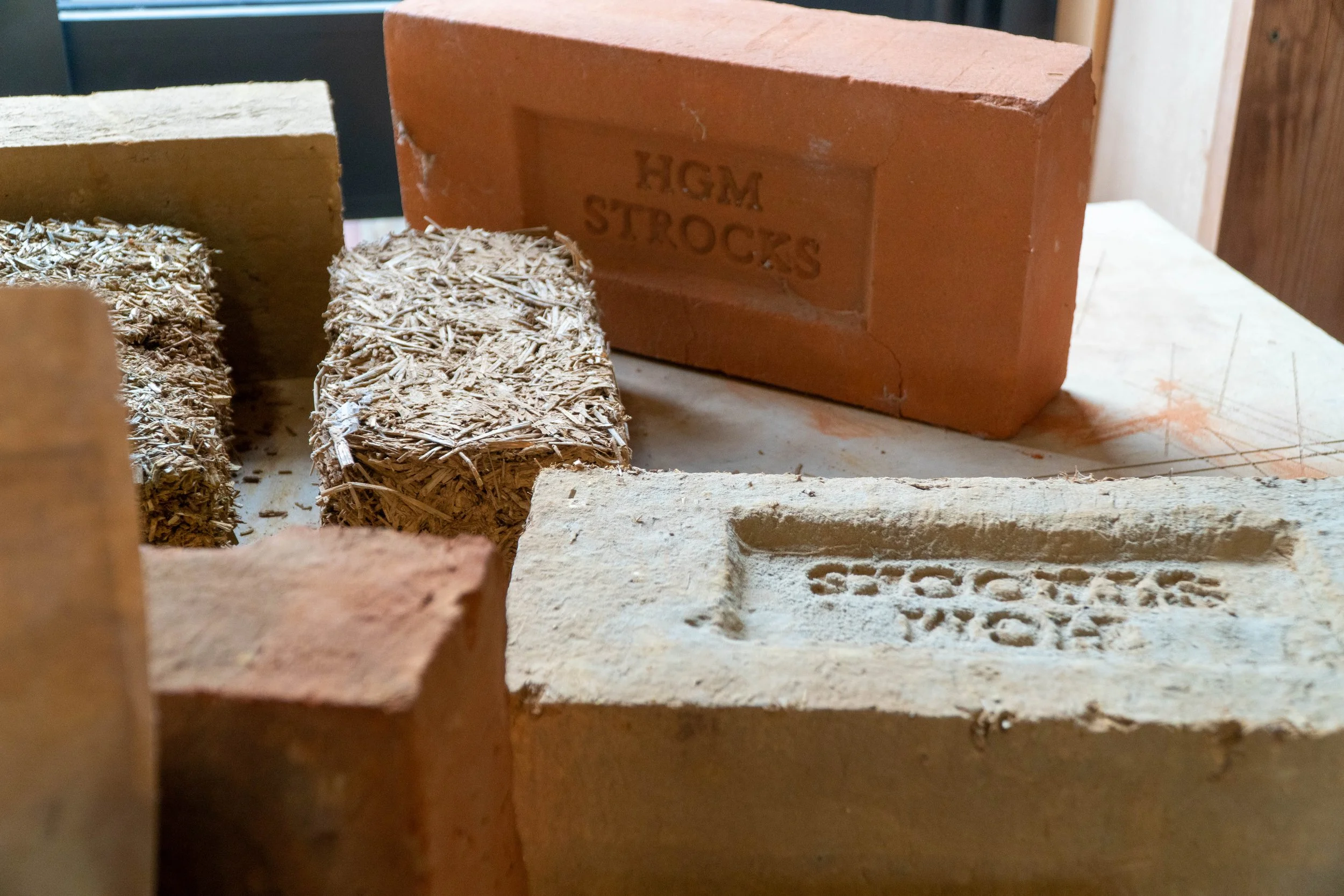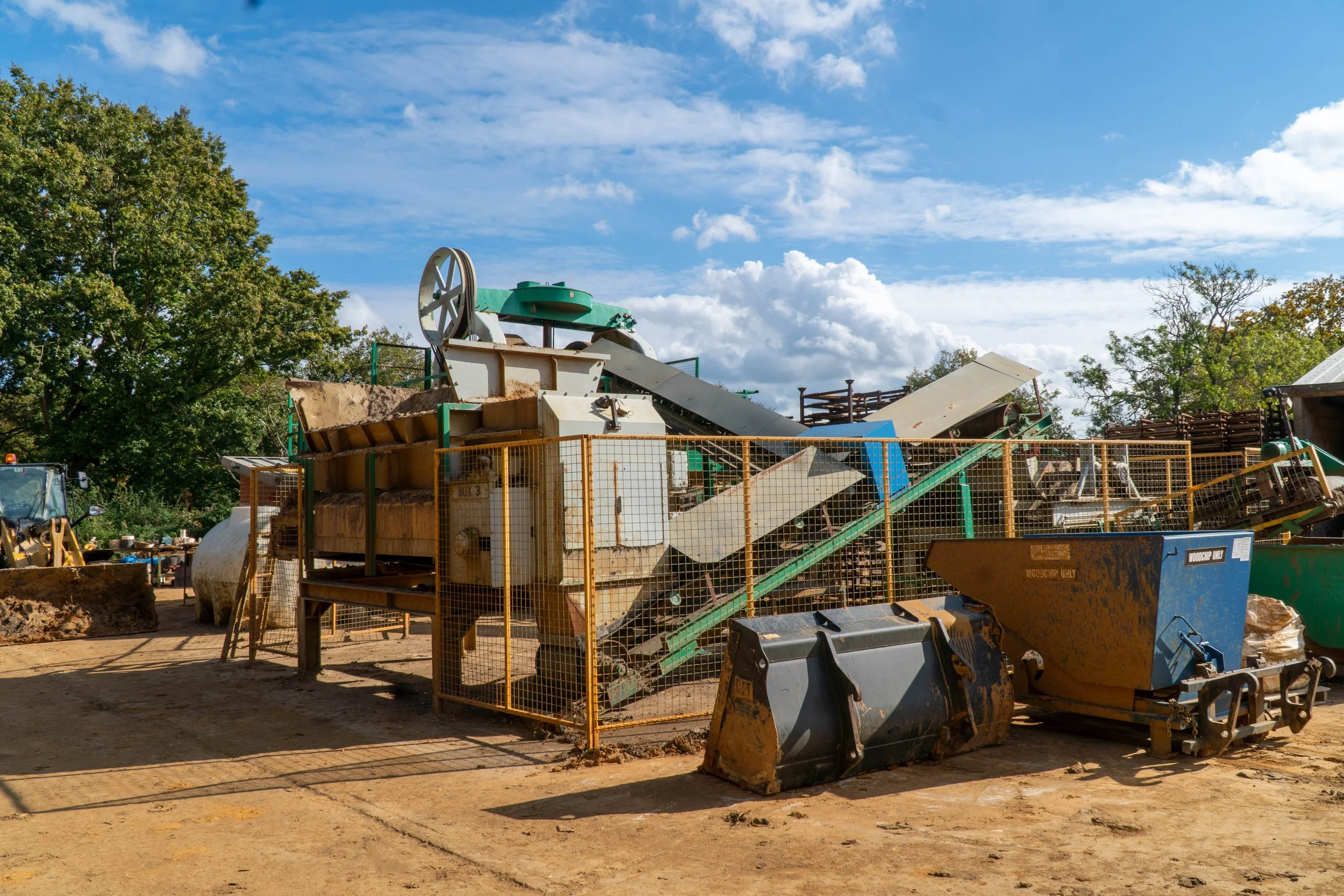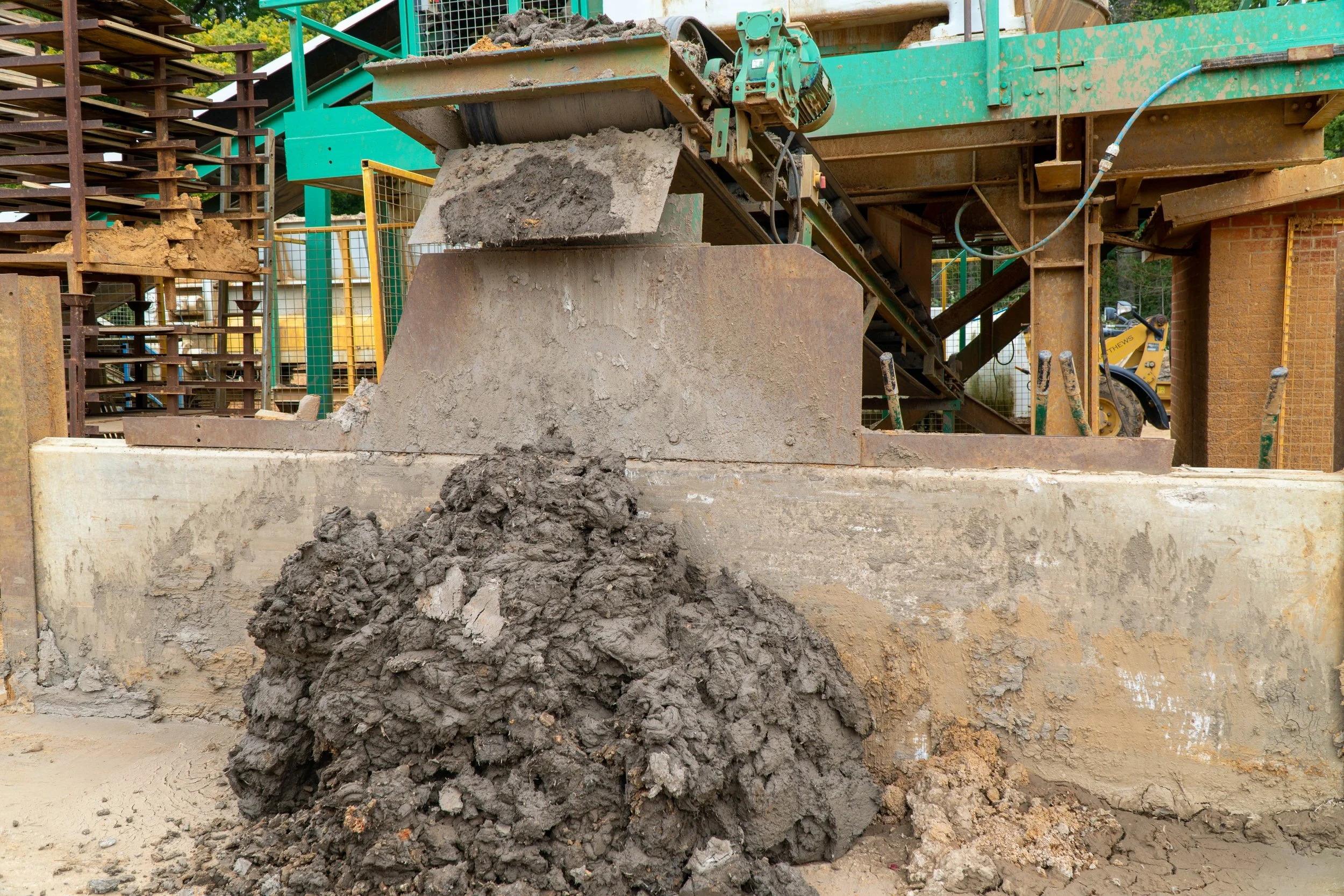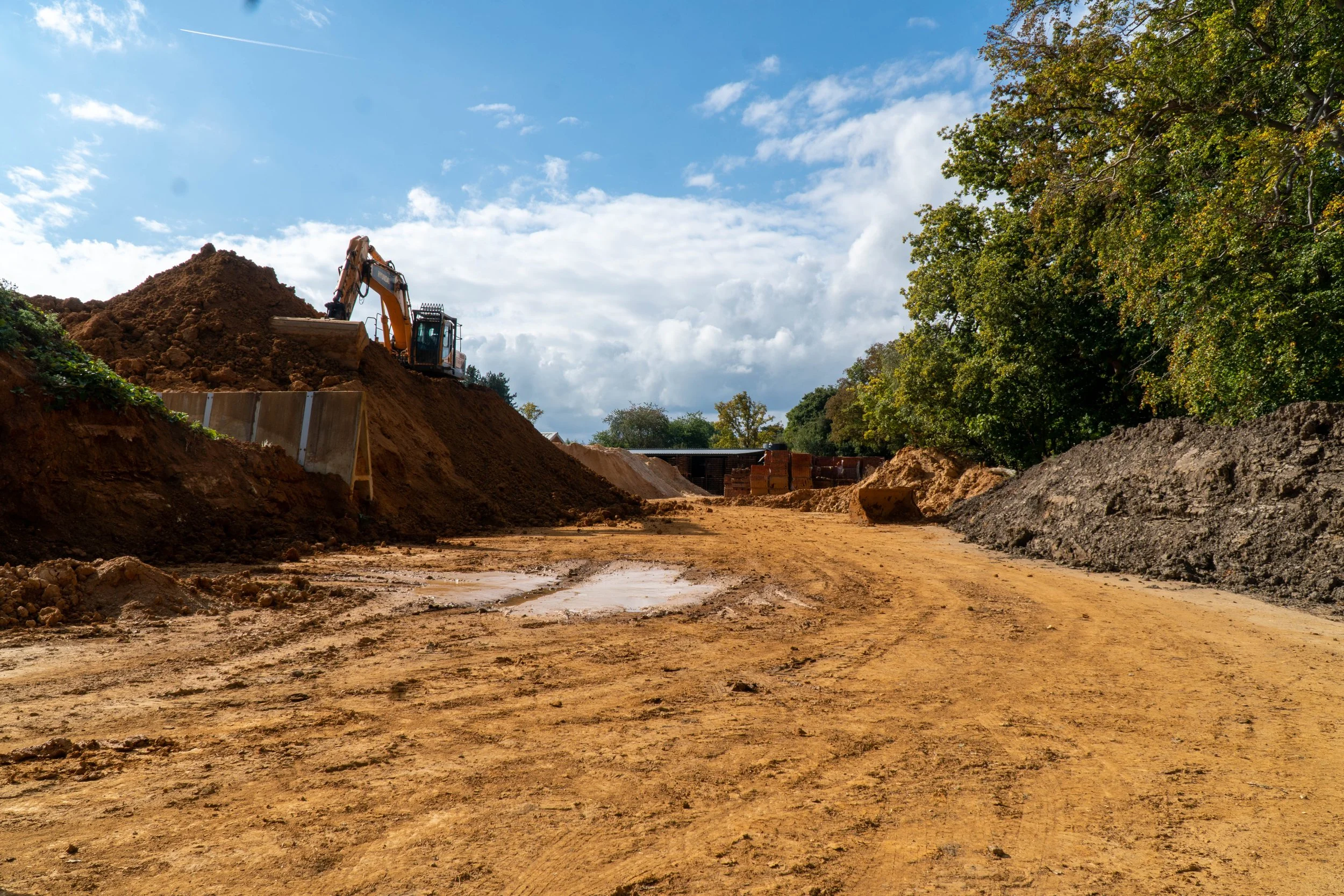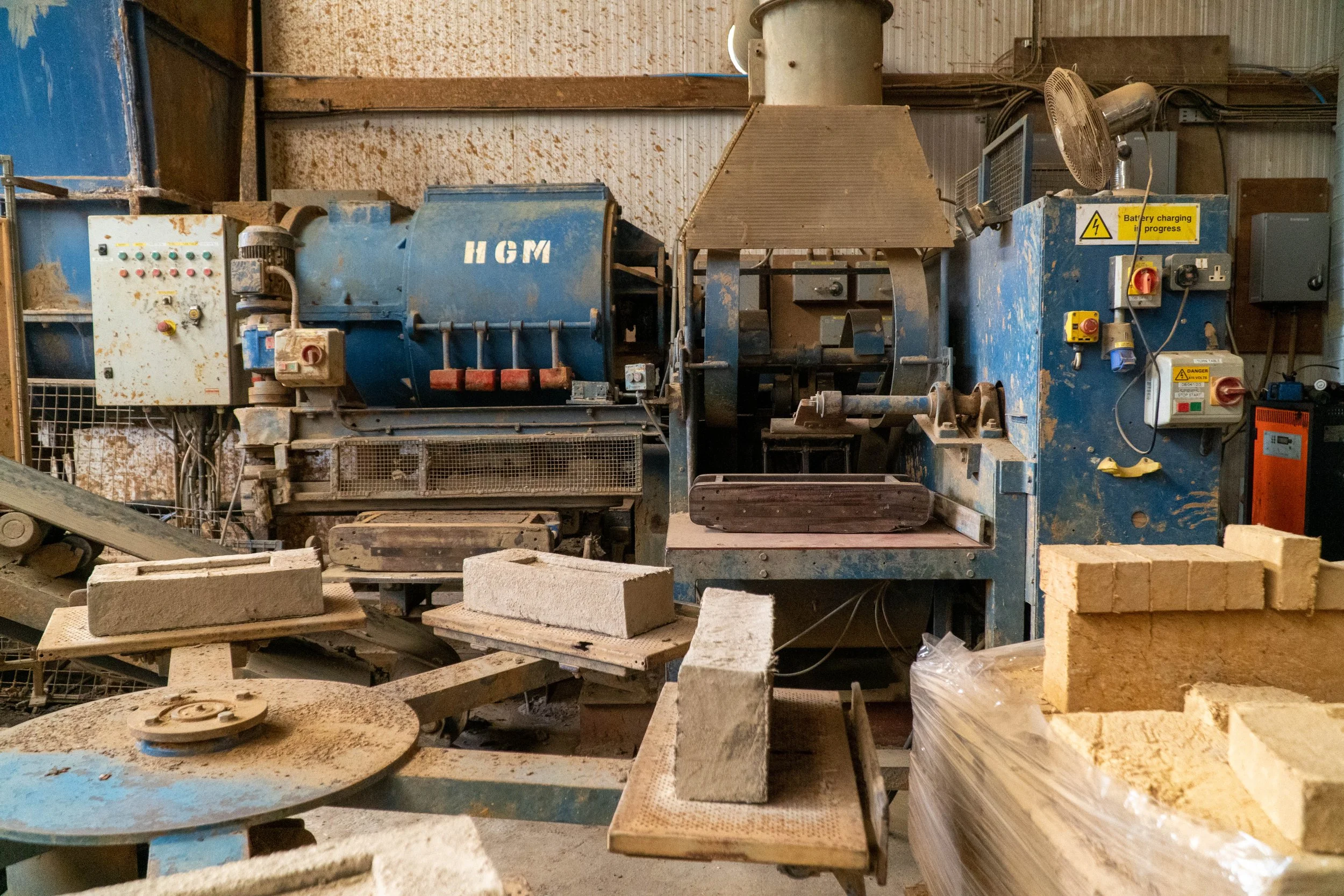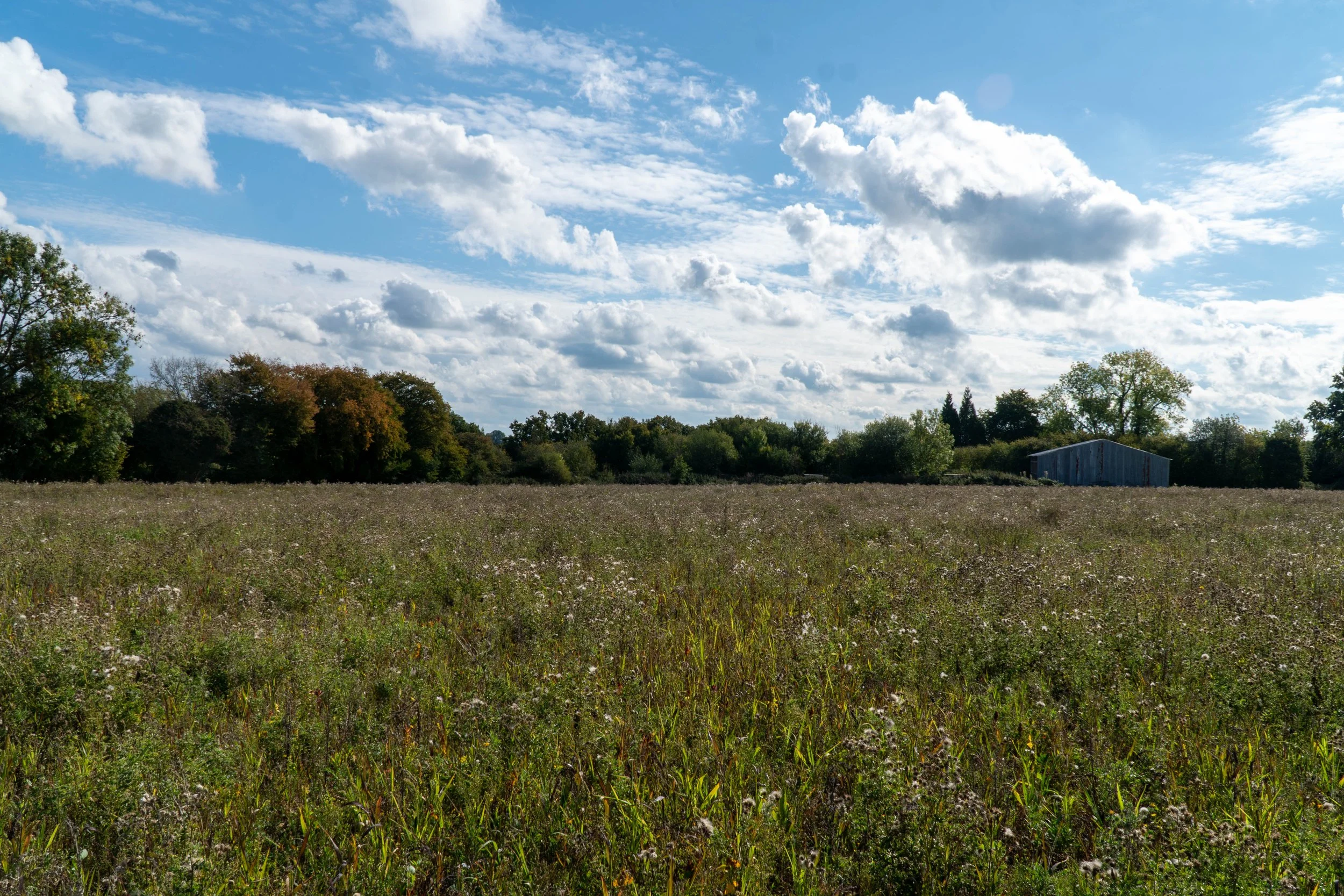STROCK Bricks: Sustainable Plug-and-Play Earth Blocks from H G Matthews
Bricks are among the most enduring materials in human construction. They are timeless, versatile, and deeply tied to place. Yet, in an age when architecture is increasingly defined by sustainability, resource efficiency, and innovation, the humble brick is being reimagined. At H G Matthews, a third-generation brickworks in Buckinghamshire. That reimagining takes the form of strocks; unfired earth blocks that combine heritage craft and knowledge with circular thinking.
On a recent visit to their factory, I explored how strocks are made, their sustainability story, and why architects and builders are beginning to see them as a large-scale solution for delivering low-carbon projects. They’re a material system designed for real projects, proven at scale, and built with the future of construction in mind.
Earth storage at H G Matthews. Darker earth to the left is from the London Tribeca site.
What Is a STROCK Brick?
STROCKS are unfired earth blocks made from a natural mix of clay-rich soil and chopped straw. Developed by H G Matthews in collaboration with Rowland Keable as a modern alternative to conventional bricks, they are designed for use in both internal walls and as the inner layer of external walls, even in load-bearing applications.
Unlike traditional bricks, they are not fired, which means their production uses far less energy and keeps their embodied carbon to a minimum.
The result is a breathable, recyclable block that offers excellent thermal mass and creates a healthy indoor environment. In some projects, STROCKS can even be made directly from the excavated earth on site, turning what would otherwise be waste into a beautiful, site-specific building material.
You can find out more information on H G Matthews STROCKS here.
Examples of Strocks
The History of H G Matthews
H G Matthews is a family-run brickworks in Buckinghamshire with more than a century of history. Now in its third generation, the company has built its reputation on making beautiful handmade bricks using local clay and traditional craft. Over the years, they have balanced this heritage with a forward-looking approach, adapting their processes to reduce environmental impact and looking towards the future of low-carbon construction. This willingness to innovate, while staying true to the craft of brickmaking, created the foundation for developing STROCK bricks. By drawing on their deep knowledge of clay and materials, H G Matthews have been able to bridge the gap between tradition and sustainability, proving that heritage and innovation can thrive side by side.
Wet pan for processes earth
Rowland Keable
A key figure in the story of STROCK is Rowland Keable, a specialist in earth construction who has spent much of his career promoting rammed earth and other natural building methods. His involvement helped connect H G Matthews’ brickmaking expertise with the wider world of sustainable architecture. Rowland’s role has been about more than materials; he has worked to build trust, ensure testing and standards are in place, and encourage architects to see earth as a credible, modern option. By linking craft knowledge with architectural ambition, he has been instrumental in bringing STROCK from an experimental idea into a material ready for large-scale projects. Rowland is proving that masterial experts, architects, and manufacturers can work together to innovate at scale.
Rowland explaining Strock production
Plug-and-Play Technology for Driving Innovation
One of the most innovative aspects of STROCK is not just the block itself, but the way it fits into H G Matthews’ existing production line. The same machines that have been used for generations of fired brickmaking are used to produce STROCK, with only the moulds adapted. This simple change means the factory can switch between traditional bricks and unfired earth blocks as demand requires. When there are orders for STROCK, production flows smoothly; if demand dips, the line can revert to bricks, ensuring the factory never stands still. This plug-and-play approach makes STROCK practical and economical to produce, while also proving that sustainable materials don’t have to mean reinventing the entire system.
Processed earth out of wet pan
The Tribeca Project
A clear example of STROCK in action can be seen at Tribeca, a major development in London with strong sustainability ambitions. As part of its whole-life carbon strategy, the project team chose to reuse excavated subsoil from the site to create STROCK blocks, which were then brought back to form part of the building. This closed loop not only avoided sending material to landfill but also gave the project a unique connection to its own ground. At Tribeca, STROCK became more than just a building block, it is part of a broader commitment to reduce embodied carbon, recycle demolition waste, and demonstrate how natural materials can perform in high-profile, large-scale developments.
H G Matthews yard with Tribeca earth to the right of the frame.
STROCK production
Sustainability of STROCK Bricks
Because the blocks are unfired, their production uses far less energy than conventional bricks, dramatically lowering embodied carbon. They are fully recyclable at the end of their life and, thanks to their breathability, help create healthy indoor environments. One of the most powerful aspects of STROCK is its circular potential: clay dug from a development site can be processed by H G Matthews and returned to that same project as finished blocks. Current regulations mean this loop can only happen on a strict site-to-site basis, but within those rules it creates a compelling narrative, turning what would otherwise be waste into a high-value, place-specific building material. For architects and builders, STROCK offers a way to cut waste, reduce carbon, and design with a material that truly tells the story of its site.
A standard brick mould. A similar format is used for STROCKS without the dividers.
The success of STROCK is not just about the material itself, but about the collaboration that made it possible. Its development has been shaped by the combined efforts of manufacturers, material experts, and architects, all working together to prove that unfired earth can stand alongside conventional building materials. Extensive testing has been carried out to build confidence, while H G Matthews’ willingness to innovate reflects both a respect for their heritage and a determination to secure the future of their business. Crucially, the plug-and-play production model has allowed STROCK to be developed with a lower financial outlay and built-in adaptability, making it practical as well as visionary. For the design community, STROCK represents more than just a sustainable block, it is a model for how collaboration and ingenuity can transform the way we build.
Views from H G Matthews

